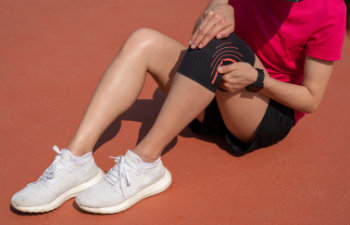Knee pain from osteoarthritis can be crippling and it results in many people seeking invasive joint replacement surgery if not controlled. When knee arthritis begins to affect mobility, one of the first treatments recommended is injection therapy. Traditional corticosteroid injections are still used for knee arthritis, but there are regenerative medicine options like PRP and hyaluronic acid injections that may benefit many patients. At Steven Struhl MD – Stem Cell Therapy NYC, we offer all three options for our patients combatting knee osteoarthritis pain and other symptoms.
There are many factors that contribute to knee osteoarthritis pain and stiffness. Inflammation is the biggest factor, causing swelling and deterioration of the knee cartilage and components. Controlling inflammation is one of the most important elements of treatment, but there are other beneficial therapies. Improving lubrication of the joint can improve stiffness and contribute to protecting the cartilage, and stimulating healing can slow the degeneration of knee joints.
Differences in Knee Arthritis Injections
Cortisone, hyaluronic acid, and PRP (platelet-rich plasma) injections all can be used to provide relief from knee arthritis pain and other symptoms. However, they work differently and there are considerations when using these treatments. Here are the basics on each of these treatments and how they can be used for knee arthritis pain.
Cortisone Injections
Corticosteroids have been used for decades for reducing inflammation. Cortisone injections are preferred for knee arthritis treatment over oral medications as they deliver the steroid directly to the joint and bypass the digestive system. Cortisone shots can provide relief quickly, usually within a few days, and results can last a few months. However, patients should only receive 3-4 shots per year to avoid deterioration of the knee joint tissues.
Hyaluronic Acid Injections
Hyaluronic acid is a naturally-occurring substance that lubricates the joints and provides other benefits throughout the body. Hyaluronic acid production wanes as you get older, which can contribute to joint pain from friction that causes wear and tear. Hyaluronic acid injections can be used instead of cortisone shots for knee pain relief. If cortisone no longer provides relief or a patient has met their annual limit of shots, hyaluronic acid injections may be right for them.
PRP Injections
PRP is derived from blood taken from the patient. It contains a high concentration of platelets that can release growth factors that combat inflammation and stimulate the healing of joint tissues. PRP injections can be combined with cortisone shots, usually performed at least a month after steroid treatment. PRP injections can be beneficial to control knee arthritis pain, but a series of injections is recommended, and the relief may take several weeks to come to fruition.
All these injections, along with stem cell treatment, can be beneficial for knee arthritis pain and may delay or stop the need for joint replacement surgery. Cortisone injections can provide faster relief, but they must be limited in frequency and do not provide the same regenerative properties as PRP or stem cell injections. To learn more about these treatments and which may be right for you, contact Steven Struhl MD – Stem Cell Therapy NYC to schedule a knee arthritis treatment consultation.
